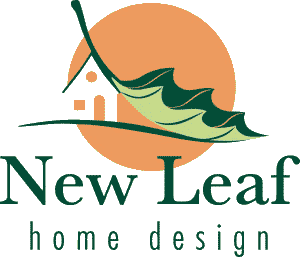If you have been following the buzz on sustainable homes, you may have heard the term “Net Zero Home”. The idea of Net Zero is to create a home that generates as much energy as it uses. Since energy usage affects both the operating costs and the environmental impact of a house long after construction is done, it’s arguably the most important consideration in building a more sustainable home. So how do you know if you’ve met Net Zero? And what can you do if solar panels are part of the long term plan for the house but you won’t be installing them right away?
There are quite a few rating systems out there that measure just how “green” a house is: LEED, the National Green Building Standard, and Passive House to name a few. Each of these systems has clear criteria for certification and third party verification, but none directly address the simple concept of generating as much energy as you use, either now or in the future. The U.S. Department of Energy is now providing a standard for building homes that are “Zero Energy Ready”. A DOE Zero Energy Ready Home is “a high performance home which is so energy efficient, that a renewable energy system can offset all or most of its annual energy consumption.” This allows you to build a home now that minimizes the amount of energy it will need for heating, cooling, hot water, and lighting. Then you can add solar panels or other ways of offsetting your energy use when the timing is right for you. It focuses on the things that are hard to change or upgrade, like the orientation of the house, how tightly the house is built, and the amount of insulation in the walls. While the return on investment for solar panels is starting to make them something many of us should consider (for existing homes too), this program doesn’t require them for certification. It simply recognizes that the first step in conservation is reducing the amount of energy a house will use. It also sets standards that make a new home healthier and more comfortable to live in. A Zero Energy Ready home must:
- Meet Energy Star 3 standards, and include the use of things like Energy Star qualified appliances and windows.
- Meet the 2012 International Energy Conservation Code levels for insulation. (Did you know that Ohio’s energy code requirements are still based on the 2009 International Energy Conservation Code?)
- Follow the latest proven research recommendations for duct installation.
- Conserve water and energy through an efficient hot water distribution system that provides rapid hot water to the homeowner. (No more waiting for hot water!)
- Meet the Indoor airPlus program requirements for indoor air quality.
There are some important considerations not addressed by Zero Energy Ready, such as whether the home is located where the need to drive to schools, work, and shopping is minimized. And it doesn’t consider the energy saved when building materials are manufactured locally. Other green rating systems provide more guidance on these issues. But Zero Energy Ready does reduce the amount of energy the house itself will use year after year, and it makes sure it is designed in such a way that it can take advantage of renewable energy in the future. Rating systems establish best practices and set benchmarks for performance, and the simplicity of this system promises to inspire more homeowners expect a higher standard of performance for their new homes. It could be the sustainable building standard you have been waiting for! Learn more about Zero Energy Ready here: http://energy.gov/eere/buildings/zero-energy-ready-home
Let New Leaf Home Design bring out the best in your existing home, or help you to design a new home that will save you energy, keep you comfortable, and provide a beautiful place to live. Tell me about your project: Hallie@NewLeafHomeDesign.com.

